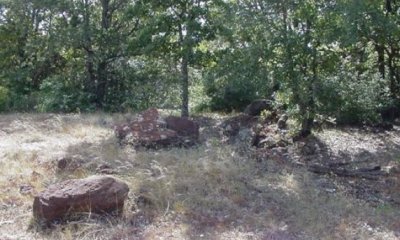
Sandstone Hill
Scenario model
Current ecosystem state
Select a state
Management practices/drivers
Select a transition or restoration pathway
-
Transition T1A
Abandonment, no fire, and/or no grazing management
More details -
Transition R2A
Prescribed grazing, fire, and/or brush management
More details -
Transition T2A
Abandonment, no fire, and/or no grazing management
More details -
Restoration pathway R3A
Extensive brush management and/or herbicide applications
More details -
No transition or restoration pathway between the selected states has been described
Target ecosystem state
Select a state
Description
One community exists in the Savannah State, the 1.1 Tallgrass/Oak Savannah Community. The State is dominated by warm season perennial grasses and the overstory canopy cover is less than 20 percent.
Submodel
Description
One community exists in the Shrubland State, the 2.1 Oak Scrub/Shrubland Community. The herbaceous production is not as great compared to the Savannah State, and overstory canopy has increased between 20 and 50 percent.
Submodel
Description
One community exists in the Woodland State, the Post Oak/Elm Woodland Community. The site is characterized by little herbaceous production. The overstory canopy is over 50 percent and shrubs also limit light to the surface.
Submodel
Mechanism
The Savannah State will transition to the Shrubland State when continued heavy grazing pressure, no brush management, and/or field abandonment continues. The transition is evident when woody species canopy cover exceeds 20 percent and grasses shift composition to more shade-tolerant species.
Mechanism
Restoration back to the Savannah State requires brush management, prescribed grazing and/or prescribed fire. Mechanical or chemical controls can be used to remove the woody overstory species and shrubs. Prescribed grazing may require destocking and/or deferment.
Mechanism
The Shrubland State will transition to the Woodland State when continued heavy grazing pressure, no brush management, and/or field abandonment continues. The transition is evident when woody species canopy cover exceeds 50 percent and grasses shift composition to more shade-tolerant species.
Mechanism
Restoration back to the Savannah State requires substantial energy inputs. Brush management and prescribed grazing will be needed to shift the community back. Mechanical or chemical controls can be used to remove the woody overstory species back below 20 percent. Prescribed grazing may require destocking and/or deferment to manage the understory grasses back to those found in the reference community. Prescribed fire may be a viable option if enough fine fuel still exists in the understory. More frequent than natural burns may be required to initiate a burning schedule.
Model keys
Briefcase
Add ecological sites and Major Land Resource Areas to your briefcase by clicking on the briefcase (![]() ) icon wherever it occurs. Drag and drop items to reorder. Cookies are used to store briefcase items between browsing sessions. Because of this, the number of items that can be added to your briefcase is limited, and briefcase items added on one device and browser cannot be accessed from another device or browser. Users who do not wish to place cookies on their devices should not use the briefcase tool. Briefcase cookies serve no other purpose than described here and are deleted whenever browsing history is cleared.
) icon wherever it occurs. Drag and drop items to reorder. Cookies are used to store briefcase items between browsing sessions. Because of this, the number of items that can be added to your briefcase is limited, and briefcase items added on one device and browser cannot be accessed from another device or browser. Users who do not wish to place cookies on their devices should not use the briefcase tool. Briefcase cookies serve no other purpose than described here and are deleted whenever browsing history is cleared.
Ecological sites
Major Land Resource Areas
The Ecosystem Dynamics Interpretive Tool is an information system framework developed by the USDA-ARS Jornada Experimental Range, USDA Natural Resources Conservation Service, and New Mexico State University.




